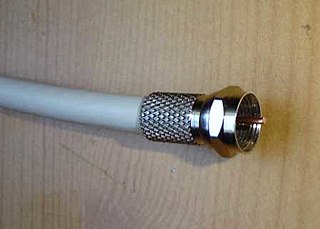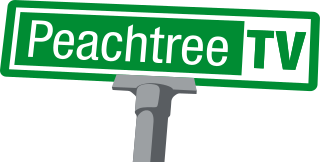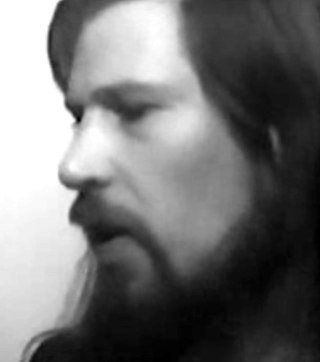Related Research Articles

Cable television is a system of delivering television programming to consumers via radio frequency (RF) signals transmitted through coaxial cables, or in more recent systems, light pulses through fibre-optic cables. This contrasts with broadcast television, in which the television signal is transmitted over-the-air by radio waves and received by a television antenna attached to the television; or satellite television, in which the television signal is transmitted over-the-air by radio waves from a communications satellite orbiting the Earth, and received by a satellite dish antenna on the roof. FM radio programming, high-speed Internet, telephone services, and similar non-television services may also be provided through these cables. Analog television was standard in the 20th century, but since the 2000s, cable systems have been upgraded to digital cable operation.
Discovery Channel is an American cable channel owned by Warner Bros. Discovery, a publicly traded company run by CEO David Zaslav. As of June 2012, Discovery Channel was the third most widely distributed subscription channel in the United States, behind now-sibling channel TBS and The Weather Channel; it is available in 409 million households worldwide, through its U.S. flagship channel and its various owned or licensed television channels internationally.

Showtime is an American premium television network owned by Paramount Media Networks, and is the flagship property of the namesake parent company, Showtime Networks, a part of Paramount Media Networks. Showtime's programming includes theatrically released motion pictures, original television series; boxing and mixed martial arts matches; occasional stand-up comedy specials, and made-for-TV movies.

The Prime Time Entertainment Network (PTEN) was an American television network that was operated by the Prime Time Consortium, a joint venture between the Warner Bros. Domestic Television subsidiary of Time Warner and Chris-Craft Industries. First launched on January 20, 1993, and operating until 1997, the network mainly aired drama programs aimed at adults between the ages of 18 and 54. At its peak, PTEN's programming was carried on 177 television stations, covering 93% of the country.

Television is one of the major mass media outlets in the United States. As of 2011, household ownership of television sets in the country is 96.7%, with approximately 114,200,000 American households owning at least one television set as of August 2013. The majority of households have more than one set. The peak ownership percentage of households with at least one television set occurred during the 1996–97 season, with 98.4% ownership. In 1948, 1 percent of U.S. households owned at least one television while 75 percent did by 1955, and by 1992, 60 percent of all U.S. households received cable television subscriptions.
Superstation is a term in North American broadcasting that has several meanings. Commonly, a "superstation" is a form of distant signal, a broadcast television signal—usually a commercially licensed station—that is retransmitted via communications satellite or microwave relay to multichannel television providers over a broad area beyond its primary terrestrial signal range.

Movie Central was a Canadian English language Category A premium cable and satellite television channel that was owned by Corus Entertainment. Movie Central was designated to operate west of the Ontario-Manitoba border, including the territories. Although the channel's name implies that it focuses solely on theatrically released motion pictures, Movie Central's programming included original and foreign television series, made-for-cable movies and documentaries.

VideoCipher is a brand name of analog scrambling and de-scrambling equipment for cable and satellite television invented primarily to enforce Television receive-only (TVRO) satellite equipment to only receive TV programming on a subscription basis.

TV listings are a printed or electronic timetable of television programs. Often intended for consumer use, these provide information concerning programming scheduled to be broadcast on various television channels available to the reader – either via terrestrial, free-to-air, cable, satellite or over-the-top MVPD – indicating at what time and on what channel they are due to be broadcast over a period usually encompassing about seven- to 14-days in advance.
Sky Television plc was a public limited company which operated a nine-channel satellite television service, launched by Rupert Murdoch's News International on 5 February 1989. Sky Television and its rival British Satellite Broadcasting suffered large financial losses, and merged on 2 November 1990 to form British Sky Broadcasting. A programming merger took effect on 1 December 1990.

WPCH-TV, branded on-air as Peachtree TV, is an independent television station in Atlanta, Georgia, United States. It is owned by locally based Gray Television alongside CBS affiliate and company flagship WANF, and low-power, Class A Telemundo affiliate WKTB-CD. WPCH-TV and WANF share studios on 14th Street Northwest in Atlanta's Atlantic Station district, while WPCH-TV's transmitter is located in the Woodland Hills section of northeastern Atlanta.

Willoughby Sharp was an American artist, independent curator, independent publisher, gallerist, teacher, author, and telecom activist. Avalanche published interviews they conducted with contemporary artists such as Vito Acconci, Dennis Oppenheim and Yvonne Rainer. Sharp also was contributing editor to four other publications: Impulse (1979–1981); Video magazine (1980–1982); Art Com (1984–1985), and the East Village Eye (1984–1986). He published three monographs on contemporary artists, contributed to many exhibition catalogues, and wrote on art for Artforum, Art in America, Arts magazine, Laica Journal, Quadrum and Rhobo. He was editor of the Public Arts International/Free Speech documentary booklet in 1979. Sharp received numerous grants, awards, and fellowships; both as an individual or under the sponsorship of non-profit arts organizations.
Paper Tiger Television (PTTV) is a non-profit, low-budget public access television program and open media collective based in New York City. Currently operating from Brooklyn, PPTV was co-founded by media activist and Academy Award nominated documentary filmmaker Dee Dee Halleck in 1981. It focuses on raising media literacy and exists as a protest to corporate control over broadcast mediums.

Home Box Office (HBO) is an American pay television network, which is the flagship property of namesake parent subsidiary Home Box Office, Inc., itself a unit owned by Warner Bros. Discovery. The overall Home Box Office business unit is based at Warner Bros. Discovery's corporate headquarters inside 30 Hudson Yards in Manhattan's West Side district. Programming featured on the network consists primarily of theatrically released motion pictures and original television programs as well as made-for-cable movies, documentaries, occasional comedy and concert specials, and periodic interstitial programs.
Cable television first became available in the United States in 1948. By 1989, 53 million U.S. households received cable television subscriptions, with 60 percent of all U.S. households doing so in 1992. Most cable viewers in the U.S. reside in the suburbs and tend to be middle class; cable television is less common in low income, urban, and rural areas.

AzTV or Azerbaijan Television is a state-controlled national television channel in Azerbaijan. It is the oldest television channel in the country, having first broadcast from Baku on 14 February 1956 in what was then the Azerbaijan Soviet Socialist Republic, Soviet Union.
Multichannel television in the United States has been available since at least 1948. The United States is served by multichannel television through cable television systems, direct-broadcast satellite providers, and various other wireline video providers; among the largest television providers in the U.S. are DirecTV, Altice USA, Charter Communications, Comcast, Dish Network, and Verizon Communications. The Telecommunications Act of 1996 defines a multichannel video programming distributor (MVPD) as "a person such as, but not limited to, a cable operator, a multichannel multipoint distribution service, a direct broadcast satellite service, or a television receive-only satellite program distributor, who makes available for purchase, by subscribers or customers, multiple channels of video programming", where a channel is defined as a "signaling path provided by a cable television system."

Home Box Office, Inc. (HBO) is an American multinational media and entertainment company operating as a unit of Warner Bros. Discovery.
Liza Béar is a New York-based filmmaker, writer, photographer, and media activist who makes both individual and collaborative works. Béar co-founded two early independent art magazines Avalanche and Bomb. Since 1968 she has lived and worked in New York City.

Documentary Now! is an American mockumentary television series, created by Fred Armisen, Bill Hader, Seth Meyers, and Rhys Thomas, that premiered on August 20, 2015, on IFC. Armisen and Hader star in many episodes, and Thomas and Alex Buono co-direct most episodes. Hosted by Helen Mirren, the series spoofs celebrated documentary films by parodying the style of each documentary with a similar, but fictitious, subject. The third season premiered on February 20, 2019. On April 8, 2019, the series was renewed for a fourth season, which premiered on October 19, 2022 and was also released on AMC+.
References
- 1 2 3 Schneider, Steven (14 April 1985). "Experimentation Shapes Cast Iron TV". The New York Times. Retrieved 24 April 2011.
- ↑ McGowan, MaryAnne. (January 1983). "Cable Review Lounge". The Kitchen press release
- ↑ Béar, Liza. "Communications Update" . Retrieved 25 April 2011.
- 1 2 Thomson, Pat (Summer 1983). "Independents on Television". Afterimage. 11 (10, 11): 28–30. doi:10.1525/aft.1983.11.1-2.28. S2CID 248379471.
- ↑ Thomson, Patrice (Fall 1983). "Television Art". ARTCOM. 6 (2): 56–59.
- 1 2 White, Robin (May 1982). "Great Expectations: Artists' TV Guide". Artforum International. 20 (10): 40–47.
- ↑ Hulser, Kathleen (January 1985). "Artists Gain Access to Cable". Videography. 10 (1): 70–73.